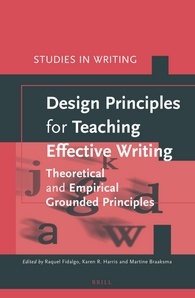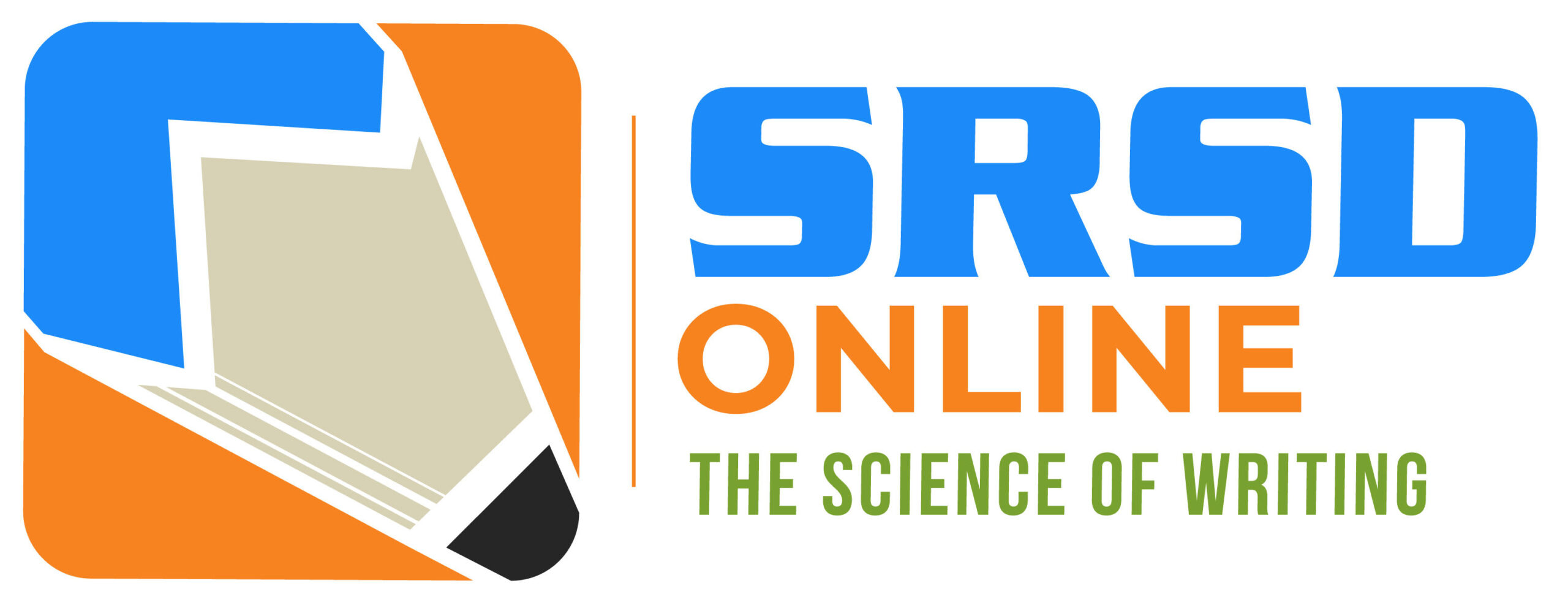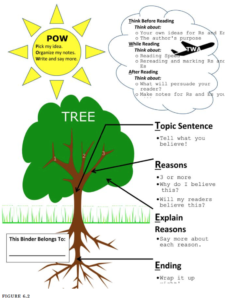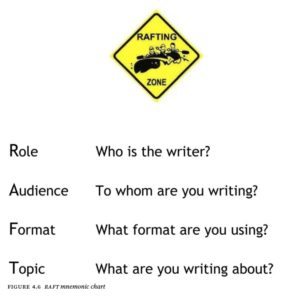DESIGN PRINCIPLES FOR TEACHING EFFECTIVE WRITING
Edited by Raquel Fidalgo (University of León), Karen R. Harris (Arizona State University), and Martine Braaksma (Education Council of the Netherlands) (2018)
“I am so excited about this book because it is truly a multiple country, multiple lines of research contribution to the field of writing and learning and there’s no other book like it before. In the last decade, we’ve learned more about how to help students focus on writing as a learning activity across school subjects and outside of school, as well. Thus, it is dedicated to those of us who care so much about not only learning to write but Writing to Learn.” Dr. Karen Harris
Free Download E-chapter 6
POW, TREE and TWA for Writing Persuasively from Source Text: Lesson Plans, Materials, and Tip
By Drs. Karen R. Harris and Steve Graham
Free Download: E-chapter 4
SRSD for RAFT Writing
By: Drs. Linda H. Mason and D. Paul Haspel

MORE ABOUT THE BOOK
Design Principles for Teaching Effective Writing
Edited by Raquel Fidalgo (University of León), Karen R. Harris (Arizona State University), and Martine Braaksma (Education Council of the Netherlands) -2018
AUTHORS:
Antonio Valle, Begoña López-Campelo, Carla M. Firetto, Celestino Rodríguez, Charles A. MacArthur, D. Paul Haspel, Daphne van Weijen, Elena Martín Ortega, Elliane Tuero, Estrella Fernández, Gert Rijlaarsdam, Isabel Martínez Álvarez, Jesús N. García, José Carlos Núñez, Julia Högemann, Karen R. Harris, Lauren Valasa Foxworth, Linda H. Mason, Liwei Wei, Mar Mateos Sanz, Mark Torrance, Martine Braaksma, Mengyi Li, P. Karen Murphy, Patricia Robledo-Ramón, Pedro Rosário, Rachel M. V. Croninger, Raquel Fidalgo, Rebeca Cerezo, Saskia Rietdijk, Steve Graham, and Tanja Janssen.
HIGHLIGHTS:
Chapter 2: Evidence-Based Writing Practices: A Meta-Analysis of Existing Meta-Analyses
By: Steve Graham and Karen R. Harris
Design Principles includes a meta-analysis of existing meta-analyses on evidence-based writing practices (not just SRSD). So, for those looking for a synopsis of what we know about effective, evidence-based approaches- not just strategy instruction- this is your up-to-date resource.
Chapter 3: Description and Analysis of Strategy-Focused Instructional Models for Writing
By: Patricia Robledo-Ramón and Jesús N. García
Some of our European colleagues conducted a detailed analysis of strategy focused instructional models for writing. This is an extremely valuable chapter for teachers, administrators, and researchers who are interested in talking about strategy instruction, especially in writing. At the current time, SRSD has the largest effect sizes and is the most widely used strategy instruction model. But part of our goal is to continue fine-tuning this instructional model while learning from the research around us. By looking at the synthesis across strategy focused models we expand the success of SRSD and I believe you will love reviewing their work.
Chapter 4: Writing-to-Learn Instruction that Works
By: Lauren Foxworth and Linda H. Mason
We devote one chapter to the research conducted on Writing to Learn, by Foxworth and Mason. Here they focus on teaching strategies that can be used prior, during or after learning to create short, written responses to a specific topic. This approach is highly flexible and more of a freestyle activity than genre focused strategy instruction. It has been used very effectively to activate students’ prior knowledge, to link their personal knowledge to content and to assess their understanding of the content they’re learning.
Chapter 6: POW, TREE and TWA for Writing Persuasively from Source Text: Lesson Plans, Materials, and Tip
By Drs. Karen R. Harris and Steve Graham
Focused on reading source material in order to write persuasively. We have been focusing at the 4-6 grade level which is not typically done in the states. Moreover, typical instruction is about learning to write and there’s very little on writing to learn. Thus, we have integrated a close reading strategy that helps students get deeply involved in the texts they are reading, marking up big ideas and then using that source text to plan, write and evaluate their persuasive essay.
Chapter 8: Analysis of Effective Instructional Sequences in Upper Primary Education (11–12 Years Old Students) to Enhance Content-Learning through the Integrated Use of Reading and Writing
By: Isabel Martínez, Mar Mateos and Elena Martín
Isabel Martinez and her colleagues add a chapter on Strategies for Writing Syntheses to Learn. This strategy is designed to improve the use of reading and writing learning tools among the 11-12-year-old students. And what’s extremely interesting here is that they’re not using a single source material. Students are synthesizing facts from several sources related to classroom content subject areas.
Chapter 9: Promoting Self-Regulation Skills in Writing using a Story Tool
By: Pedro Rosário, José Carlos Núñez, Celestino Rodríguez, Rebeca Cerezo, Estrella Fernández, Ellian Tuero and Julia Högemann
This is one of the more unique concepts I’ve seen in the self-regulation research. The story revolves around a set of animal characters who must learn to self-regulate in order to succeed. It’s not in writing- it’s in this situation that they find themselves- but the teacher uses the story to define these critical self-regulation skills: setting goals, having a plan, evaluating goals, etc. This story allows the teacher to broaden the concept of self-regulation beyond writing and how we can use it in living and learning situations across content areas in schools.





